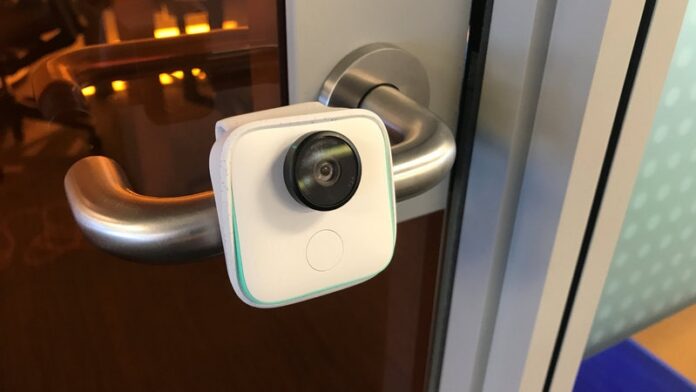Babies, dogs and artificial intelligence.
Alphabet’s Google is betting this combination proves irresistible with the Tuesday launch of Google Clips, a pocket-sized digital camera that decides on its own whether an image is interesting enough to shoot.
The $249 (roughly Rs. 16,200) device, which is designed to clip onto furniture or other fixed objects, automatically captures subjects that wander into its viewfinder. But unlike some trail or security cameras that are triggered by motion or programmed on timers, Clips is more discerning. Google has trained its electronic brain to recognise smiles, human faces, dogs, cats and rapid sequences of movement.
The company sees big potential with parents and pet owners looking to grab candid shots of kids and animals. The Clip shoots seven-second videos, without audio, that can be edited into GIFs or high-definition photos. These images can then be downloaded and shared via smartphone.
But Google’s bigger ambition is the mastery – and commercialisation – of artificial intelligence, an area where it is investing big. Google executives say success requires tight integration between hardware and software, which is why the search-engine giant keeps plugging away at consumer electronics.
The company has yet to dominate with its devices, though its Google Home smart speakers, Chromecast TV dongles and Pixel smartphones have all won high marks from consumers.
Each new gadget wires customers more deeply into its suite of services, which will be essential as Google competes with Apple, Amazon.com, and Facebook to be a primary hub for entertainment and shopping.
Google is sharpening its focus with each effort. With its Clips smart camera, the company is trying to hook shutterbugs with a soft introduction to artificial intelligence.
“Being able to have cameras identify what’s happening in the home, without having to filter through recordings, this is where the market for video in the home is moving,” said Blake Kozak, principal analyst at IHS Markit.
Some analysts are dubious that Clips will be a blockbuster in a marketplace crowded with digital cameras. Its price could prove too high to justify its narrow uses. Alternatives such as pet camera Petcube, for example, provide more functionality, including remote monitoring. Lack of audio, limited battery life and privacy concerns could further limit Clips’ appeal.
But the device is nonetheless an important demonstration of Google’s advances in computer vision, a form of artificial intelligence focused on identifying objects, according to Cyril Ebersweiler, founder of the hardware business incubator HAX.
“The next thing after sound will be computer vision, and they can’t allow [themselves] not to be doing something,” Ebersweiler said.
The new candid camera
Google says Clips, which was announced in October, is the outgrowth of years of research into what people like about their favourite images. Consumers overwhelmingly preferred candid shots as opposed to ubiquitous selfies and other posed photos. But casual photographers often cannot whip out their phones in time to catch the action. And many subjects become self-conscious when they know a camera is pointed their way.
“There is gold in between the photos you take” with smartphones, Juston Payne, product lead for Google Clips, told reporters this month. “This camera gets at those moments.”
Payne said his team had no mandate to develop a stand-alone camera. They could have packed more software into smartphone cameras, for instance.
But he said a dedicated device that could fade into the background proved to be the best solution for naturalistic photography. Measuring 2 inches by 2 inches and weighing two ounces, Clips can be hung from a drawer handle or a tree branch at the playground. Payne said the gadget is not meant to be worn.
The camera captures the best shots when subjects are about three feet away and in its frame. It operates three hours on a charge.
Clips is being sold at Best Buy and Verizon retail outlets as well as Google’s online store.
Google says it attempted to address privacy concerns by placing white lights on Clips to alert subjects when the camera is filming. It also intentionally avoided giving the camera a direct connection to the cloud.
The device’s lack of sound may disappoint consumers, but Payne said audio would have encouraged people to film themselves while skydiving or skiing, pursuits the gadget’s auto-capture technology is not yet capable of handling.
Michael Kim, a product design consultant at Kim Advisory Capital, said Clips could be convenient as an “ambient photographer.” But he questioned whether such a pricey “novelty toy” could win a large following.
© Thomson Reuters 2018


